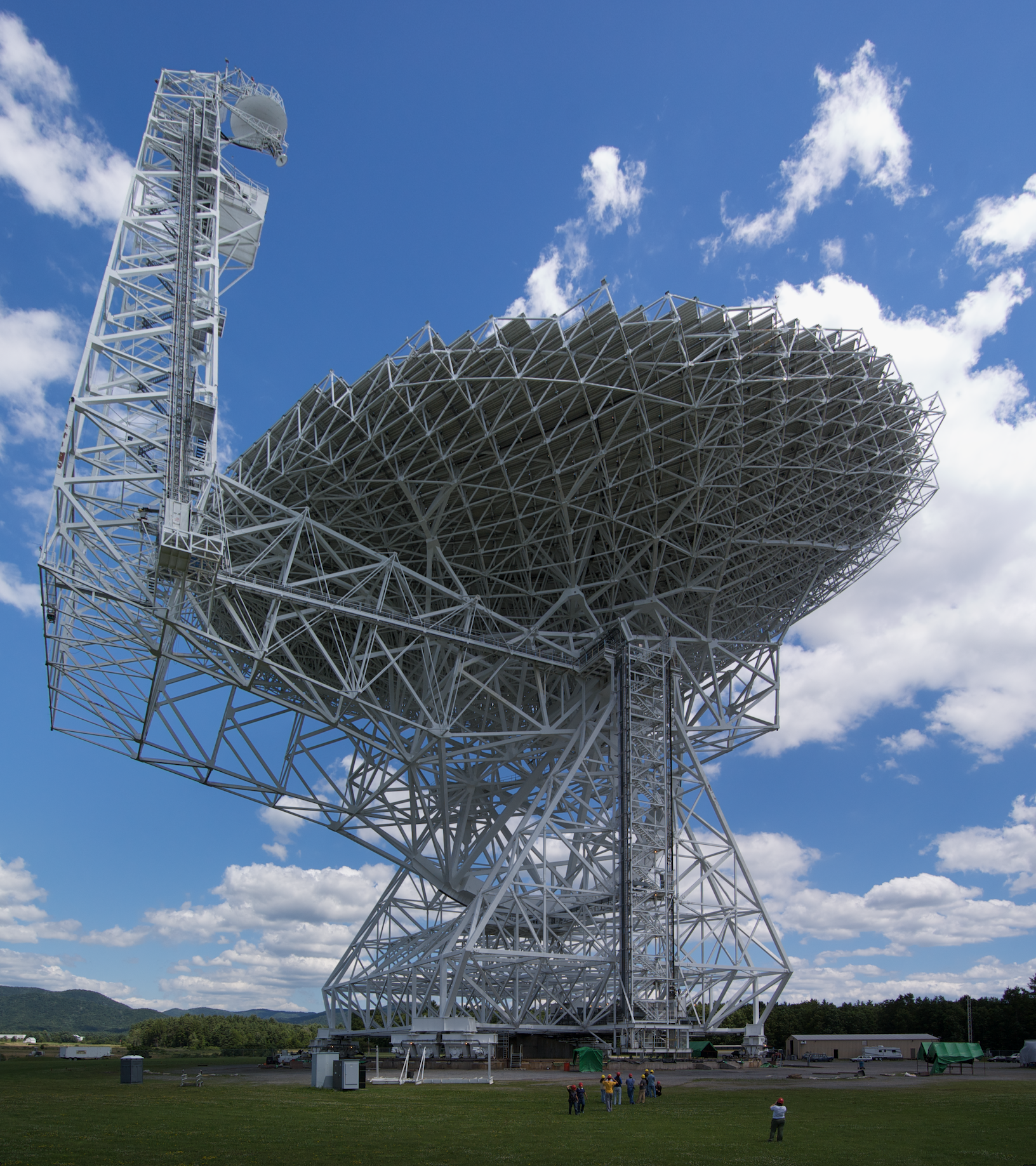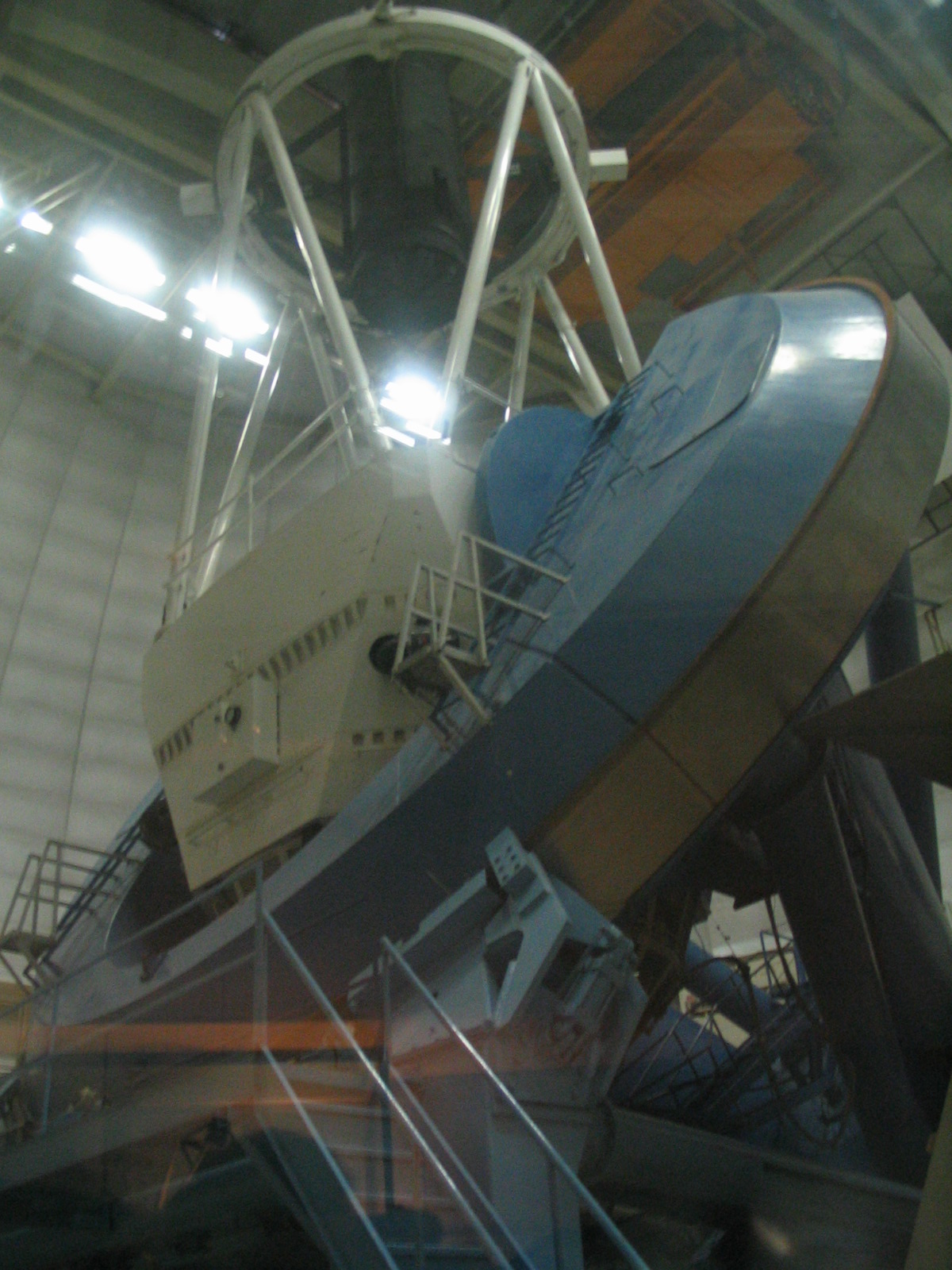|
Splatalogue
Splatalogue is a database for astronomical spectroscopy which contains information on nearly six million spectral lines and is maintained by the National Radio Astronomy Observatory (NRAO). A. J. Markwick-Kemper, A. J. Remijan"The Splatalogue (Spectral Line Catalogue) and Calibase (Calibration Source Database)" ''Bulletin of the American Astronomical Society'', vol. 38, p. 130, 2006. The name is a portmanteau of "spectral line catalogue". It contains data from seven catalogues and other sources of spectral line data and is accessible via an online search interface. Spectral lines The spectral lines contained in Splatalogue range in frequency from 400 to 3.22×1018 Hz (400 Hz to 3.22 PHz), or equivalently, wavelengths from 97.25nm to 749.5 km). About 99.99% of the lines are in the microwave, millimeter, and submillimeter spectral regimes (1 GHz to 10 THz), as the catalogue is for use mainly by observational astronomers using instruments such as the Atacama Large Millimeter ... [...More Info...] [...Related Items...] OR: [Wikipedia] [Google] [Baidu] |
Spectral Line
A spectral line is a dark or bright line in an otherwise uniform and continuous spectrum, resulting from emission or absorption of light in a narrow frequency range, compared with the nearby frequencies. Spectral lines are often used to identify atoms and molecules. These "fingerprints" can be compared to the previously collected ones of atoms and molecules, and are thus used to identify the atomic and molecular components of stars and planets, which would otherwise be impossible. Types of line spectra Spectral lines are the result of interaction between a quantum system (usually atoms, but sometimes molecules or atomic nuclei) and a single photon. When a photon has about the right amount of energy (which is connected to its frequency) to allow a change in the energy state of the system (in the case of an atom this is usually an electron changing orbitals), the photon is absorbed. Then the energy will be spontaneously re-emitted, either as one photon at the same freque ... [...More Info...] [...Related Items...] OR: [Wikipedia] [Google] [Baidu] |
Astronomical Spectroscopy
Astronomical spectroscopy is the study of astronomy using the techniques of spectroscopy to measure the spectrum of electromagnetic radiation, including visible light, ultraviolet, X-ray, infrared and radio waves that radiate from stars and other celestial objects. A stellar spectrum can reveal many properties of stars, such as their chemical composition, temperature, density, mass, distance and luminosity. Spectroscopy can show the velocity of motion towards or away from the observer by measuring the Doppler shift. Spectroscopy is also used to study the physical properties of many other types of celestial objects such as planets, nebulae, galaxies, and active galactic nuclei. Background Astronomical spectroscopy is used to measure three major bands of radiation in the electromagnetic spectrum: visible light, radio waves, and X-rays. While all spectroscopy looks at specific bands of the spectrum, different methods are required to acquire the signal depending on the frequency. ... [...More Info...] [...Related Items...] OR: [Wikipedia] [Google] [Baidu] |
National Radio Astronomy Observatory
The National Radio Astronomy Observatory (NRAO) is a federally funded research and development center of the United States National Science Foundation operated under cooperative agreement by Associated Universities, Inc. for the purpose of radio astronomy. NRAO designs, builds, and operates its own high-sensitivity radio telescopes for use by scientists around the world. Locations Charlottesville, Virginia The NRAO headquarters is located on the campus of the University of Virginia in Charlottesville, Virginia. The North American ALMA Science Center and the NRAO Technology Center and Central Development Laboratory are also in Charlottesville. Green Bank, West Virginia NRAO was, until October 2016, the operator of the world's largest fully steerable radio telescope, the Robert C. Byrd Green Bank Telescope, which stands near Green Bank, West Virginia. The observatory contains several other telescopes, among them the telescope that utilizes an equatorial mount uncommon for ra ... [...More Info...] [...Related Items...] OR: [Wikipedia] [Google] [Baidu] |
Microwave
Microwave is a form of electromagnetic radiation with wavelengths ranging from about one meter to one millimeter corresponding to frequency, frequencies between 300 MHz and 300 GHz respectively. Different sources define different frequency ranges as microwaves; the above broad definition includes both Ultra high frequency, UHF and Extremely high frequency, EHF (millimeter wave) bands. A more common definition in radio-frequency engineering is the range between 1 and 100 GHz (wavelengths between 0.3 m and 3 mm). In all cases, microwaves include the entire Super high frequency, SHF band (3 to 30 GHz, or 10 to 1 cm) at minimum. Frequencies in the microwave range are often referred to by their Radio band#IEEE, IEEE radar band designations: S band, S, C band (IEEE), C, X band, X, Ku band, Ku, K band (IEEE), K, or Ka band, Ka band, or by similar NATO or EU designations. The prefix ' in ''microwave'' is not meant to suggest a wavelength in the M ... [...More Info...] [...Related Items...] OR: [Wikipedia] [Google] [Baidu] |
Extremely High Frequency
Extremely high frequency (EHF) is the International Telecommunication Union (ITU) designation for the band of radio frequencies in the electromagnetic spectrum from 30 to 300 gigahertz (GHz). It lies between the super high frequency band and the far infrared band, the lower part of which is the terahertz band. Radio waves in this band have wavelengths from ten to one millimetre, so it is also called the millimetre band and radiation in this band is called millimetre waves, sometimes abbreviated MMW or mmWave. Millimetre-length electromagnetic waves were first investigated by Indian physicist Jagadish Chandra Bose, who generated waves of frequency up to 60GHz during experiments in 18941896. Compared to lower bands, radio waves in this band have high atmospheric attenuation: they are absorbed by the gases in the atmosphere. Absorption increases with frequency until at the top end of the band the waves are attenuated to zero within a few meters. Absorption by humidity in the atmosp ... [...More Info...] [...Related Items...] OR: [Wikipedia] [Google] [Baidu] |
Terahertz Radiation
Terahertz radiation – also known as submillimeter radiation, terahertz waves, tremendously high frequency (THF), T-rays, T-waves, T-light, T-lux or THz – consists of electromagnetic waves within the ITU-designated band of frequencies from 0.3 to 3 terahertz (THz), although the upper boundary is somewhat arbitrary and is considered by some sources as 30 THz. One terahertz is 1012 Hz or 1000 GHz. Wavelengths of radiation in the terahertz band correspondingly range from 1 mm to 0.1 mm = 100 µm. Because terahertz radiation begins at a wavelength of around 1 millimeter and proceeds into shorter wavelengths, it is sometimes known as the ''submillimeter band'', and its radiation as ''submillimeter waves'', especially in astronomy. This band of electromagnetic radiation lies within the transition region between microwave and far infrared, and can be regarded as either. Terahertz radiation is strongly absorbed by the gases ... [...More Info...] [...Related Items...] OR: [Wikipedia] [Google] [Baidu] |
Observational Astronomy
Observational astronomy is a division of astronomy that is concerned with recording data about the observable universe, in contrast with theoretical astronomy, which is mainly concerned with calculating the measurable implications of physical models. It is the practice and study of observing celestial objects with the use of telescopes and other astronomical instruments. As a science, the study of astronomy is somewhat hindered in that direct experiments with the properties of the distant universe are not possible. However, this is partly compensated by the fact that astronomers have a vast number of visible examples of stellar phenomena that can be examined. This allows for observational data to be plotted on graphs, and general trends recorded. Nearby examples of specific phenomena, such as variable stars, can then be used to infer the behavior of more distant representatives. Those distant yardsticks can then be employed to measure other phenomena in that neighborhood, inc ... [...More Info...] [...Related Items...] OR: [Wikipedia] [Google] [Baidu] |
Atacama Large Millimeter Array
The Atacama Large Millimeter/submillimeter Array (ALMA) is an astronomical interferometer of 66 radio telescopes in the Atacama Desert of northern Chile, which observe electromagnetic radiation at millimeter and submillimeter wavelengths. The array has been constructed on the elevation Chajnantor plateau - near the Llano de Chajnantor Observatory and the Atacama Pathfinder Experiment. This location was chosen for its high elevation and low humidity, factors which are crucial to reduce noise and decrease signal attenuation due to Earth's atmosphere. ALMA provides insight on star birth during the early Stelliferous era and detailed imaging of local star and planet formation. ALMA is an international partnership amongst Europe, the United States, Canada, Japan, South Korea, Taiwan, and Chile. Costing about US$1.4 billion, it is the most expensive ground-based telescope in operation. ALMA began scientific observations in the second half of 2011 and the first imag ... [...More Info...] [...Related Items...] OR: [Wikipedia] [Google] [Baidu] |
NRAO
The National Radio Astronomy Observatory (NRAO) is a federally funded research and development center of the United States National Science Foundation operated under cooperative agreement by Associated Universities, Inc. for the purpose of radio astronomy. NRAO designs, builds, and operates its own high-sensitivity radio telescopes for use by scientists around the world. Locations Charlottesville, Virginia The NRAO headquarters is located on the campus of the University of Virginia in Charlottesville, Virginia. The North American ALMA Science Center and the NRAO Technology Center and Central Development Laboratory are also in Charlottesville. Green Bank, West Virginia NRAO was, until October 2016, the operator of the world's largest fully steerable radio telescope, the Robert C. Byrd Green Bank Telescope, which stands near Green Bank, West Virginia. The observatory contains several other telescopes, among them the telescope that utilizes an equatorial mount uncommon for radio ... [...More Info...] [...Related Items...] OR: [Wikipedia] [Google] [Baidu] |
Karl G
Karl may refer to: People * Karl (given name), including a list of people and characters with the name * Karl der Große, commonly known in English as Charlemagne * Karl Marx, German philosopher and political writer * Karl of Austria, last Austrian Emperor * Karl (footballer) (born 1993), Karl Cachoeira Della Vedova Júnior, Brazilian footballer In myth * Karl (mythology), in Norse mythology, a son of Rig and considered the progenitor of peasants (churl) * ''Karl'', giant in Icelandic myth, associated with Drangey island Vehicles * Opel Karl, a car * ST ''Karl'', Swedish tugboat requisitioned during the Second World War as ST ''Empire Henchman'' Other uses * Karl, Germany, municipality in Rhineland-Palatinate, Germany * '' Karl-Gerät'', AKA Mörser Karl, 600mm German mortar used in the Second World War * KARL project, an open source knowledge management system * Korean Amateur Radio League, a national non-profit organization for amateur radio enthusiasts in South Korea * ... [...More Info...] [...Related Items...] OR: [Wikipedia] [Google] [Baidu] |
Robert C
The name Robert is an ancient Germanic given name, from Proto-Germanic "fame" and "bright" (''Hrōþiberhtaz''). Compare Old Dutch ''Robrecht'' and Old High German ''Hrodebert'' (a compound of '' Hruod'' ( non, Hróðr) "fame, glory, honour, praise, renown" and ''berht'' "bright, light, shining"). It is the second most frequently used given name of ancient Germanic origin. It is also in use as a surname. Another commonly used form of the name is Rupert. After becoming widely used in Continental Europe it entered England in its Old French form ''Robert'', where an Old English cognate form (''Hrēodbēorht'', ''Hrodberht'', ''Hrēodbēorð'', ''Hrœdbœrð'', ''Hrœdberð'', ''Hrōðberχtŕ'') had existed before the Norman Conquest. The feminine version is Roberta. The Italian, Portuguese, and Spanish form is Roberto. Robert is also a common name in many Germanic languages, including English, German, Dutch, Norwegian, Swedish, Scots, Danish, and Icelandic. It can ... [...More Info...] [...Related Items...] OR: [Wikipedia] [Google] [Baidu] |





.jpg)
